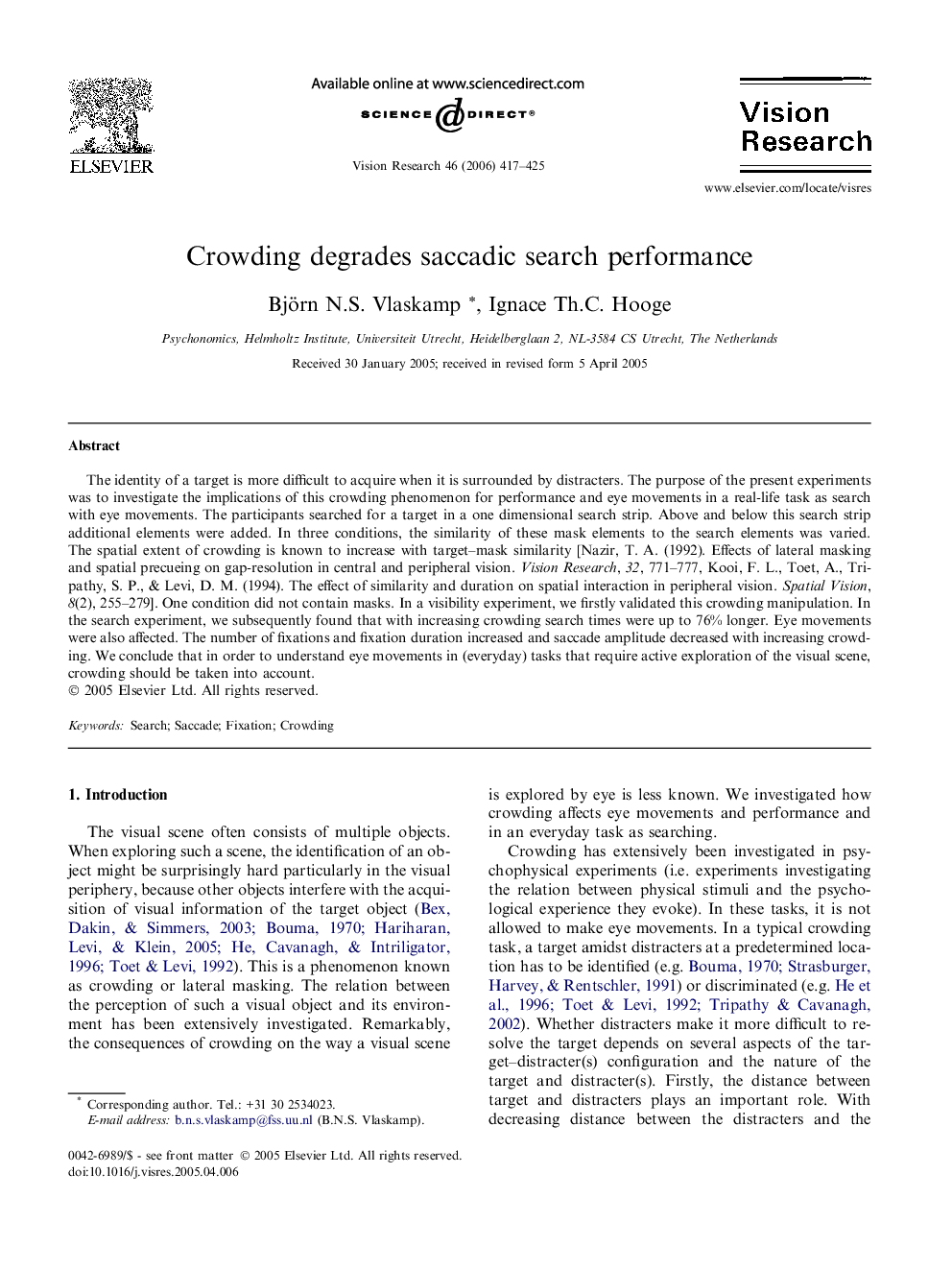| Article ID | Journal | Published Year | Pages | File Type |
|---|---|---|---|---|
| 4035388 | Vision Research | 2006 | 9 Pages |
The identity of a target is more difficult to acquire when it is surrounded by distracters. The purpose of the present experiments was to investigate the implications of this crowding phenomenon for performance and eye movements in a real-life task as search with eye movements. The participants searched for a target in a one dimensional search strip. Above and below this search strip additional elements were added. In three conditions, the similarity of these mask elements to the search elements was varied. The spatial extent of crowding is known to increase with target–mask similarity [Nazir, T. A. (1992). Effects of lateral masking and spatial precueing on gap-resolution in central and peripheral vision. Vision Research, 32, 771–777, Kooi, F. L., Toet, A., Tripathy, S. P., & Levi, D. M. (1994). The effect of similarity and duration on spatial interaction in peripheral vision. Spatial Vision, 8(2), 255–279]. One condition did not contain masks. In a visibility experiment, we firstly validated this crowding manipulation. In the search experiment, we subsequently found that with increasing crowding search times were up to 76% longer. Eye movements were also affected. The number of fixations and fixation duration increased and saccade amplitude decreased with increasing crowding. We conclude that in order to understand eye movements in (everyday) tasks that require active exploration of the visual scene, crowding should be taken into account.
